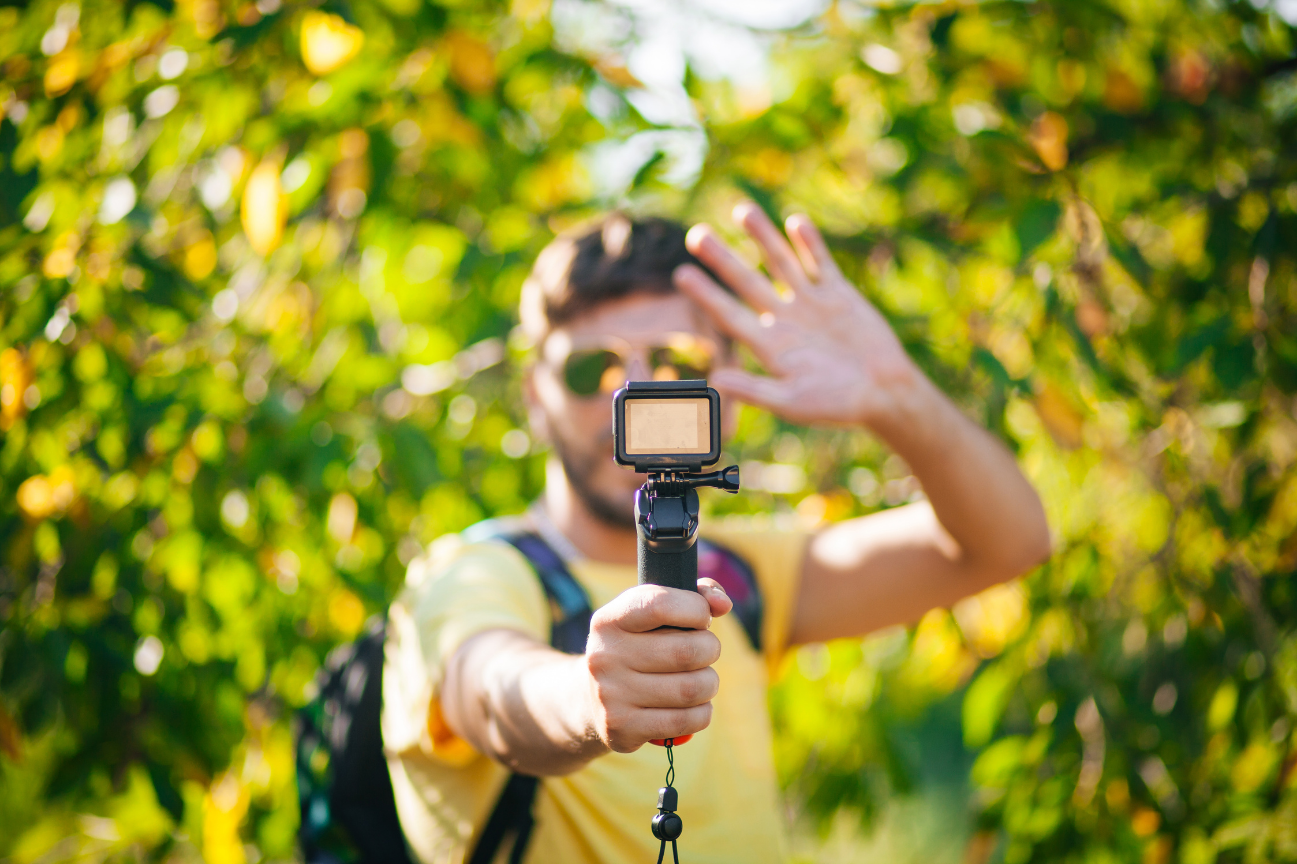If you're aiming to attract more visitors to your theme park, this guide is tailored for you. This article explores practical strategies that enhance your marketing efforts, starting with identifying your target audience and creating a standout brand identity.
You'll learn how to adjust your pricing for maximum attendance and discover promotions that effectively boost ticket sales.We'll also cover how to run effective advertising campaigns, organize events that attract diverse groups, and maintain a strong social media presence to engage visitors.
Additionally, this guide addresses common challenges such as managing seasonal visitor fluctuations and ensuring safety during peak times. Ready to enhance your visitor experience and keep them coming back? Let's get started on boosting your amusement park's popularity.
Identifying Potential Customers for Theme Parks
Understanding who visits your theme park is crucial for shaping your marketing strategies effectively. Instead of a broad approach, consider segmenting your audience based on their specific interests and behaviors.
Analyze data from past visitors to identify patterns—like peak visit times, popular attractions, and demographic details. This information helps you create targeted campaigns that resonate with different visitor groups, such as families, thrill-seekers, or event-goers. By focusing on the preferences and expectations of these distinct groups, you can tailor experiences that meet their desires, increasing both satisfaction and the likelihood of return visits.
While segmenting your audience, consider leveraging proven marketing strategies tailored for specific sectors within the amusement industry. For instance, learn more about effective marketing strategies for tour and activity operators, which can help you fine-tune your approach to meet the unique needs of different visitor groups.
Create a Unique Brand Identity for Amusement Parks
Crafting a unique brand identity for your amusement park is essential in setting it apart from competitors. Think beyond logos and taglines; your brand identity should reflect the unique experiences and emotions that your park offers.
This could mean focusing on specific themes that resonate deeply with your audience, like adventure, fantasy, or technology. For example, if your park has a historical or cultural theme, every element from staff costumes to restaurant menus should echo this. The goal is to create a cohesive and fascinating experience that starts with your marketing and extends to every corner of your park.
This consistency not only strengthens your brand but also enhances the overall visitor experience, making your park a memorable destination that guests will want to return to and recommend.
Explore Pricing Strategies
Exploring effective pricing strategies is key to optimizing both revenue and attendance at your amusement park. Consider implementing a dynamic pricing model, where ticket prices vary based on factors like demand, day of the week, or season. This approach can help manage crowd sizes and maximize profits during peak times.
Additionally, think about offering tiered pricing options to cater to different budgets and preferences, such as VIP packages or discounted rates for off-peak hours. Promotions, like family bundles or special rates for returning visitors, can also incentivize purchases and enhance visitor loyalty.
By tailoring your pricing strategy to reflect visitor trends and preferences, you can create a more accessible and appealing experience for a wider audience.
Offer Discounts and Promotions to Attract Visitors
Offering discounts and promotions can be a powerful strategy to attract more visitors to your amusement park. Consider seasonal discounts, multi-day passes, or special rates for groups to encourage larger bookings and repeat visits. Promotions tied to local events, holidays, or collaborations with schools and community organizations can also draw in new audiences.
For instance, a "bring a friend" promotion could double your traffic on slower days. Implementing a loyalty program where visitors earn points for each visit or purchase can further boost engagement and return rates.
By creating targeted promotions that cater to the interests and needs of different visitor segments, you can increase attendance and ensure a steady flow of guests throughout the year.
Launch Advertising Campaigns to Boost Park Attendance
Launching targeted advertising campaigns is crucial for boosting attendance at your amusement park. Start by identifying the most effective channels for reaching your intended audience, whether through traditional media like TV and radio or digital platforms like social media and online ads.
Create compelling ads that highlight the unique features of your park, such as new rides, special events, or seasonal themes. Emphasize the fun, excitement, and memorable experiences that await visitors. Additionally, consider using retargeting strategies to re-engage people who have shown interest but haven't yet visited.
Your advertising campaigns can significantly increase park attendance and enhance public awareness of your brand by carefully crafting your message and choosing the right channels.
Host Special Events to Draw Crowds
Hosting special events is an effective way to draw crowds to your amusement park. Plan a variety of events that can attract different demographic groups throughout the year. For example, consider hosting themed festivals, concerts, or movie nights that align with the interests of your target audiences. Holiday-specific events, like Halloween haunted houses or Christmas markets, can also generate significant visitor interest.
In addition to entertainment, educational events such as workshops or exhibitions related to the themes of your park can engage families and school groups. Implementing these special events not only boosts attendance on the event days themselves but can also enhance the overall appeal of your park, encouraging first-time visitors to become regular guests.
When planning events to boost attendance, think about incorporating unique attraction-specific promotions. For example, if your park features a zipline, you might find inspiration from these creative marketing ideas for zipline operators to attract adventure seekers.
Use Social Media Platforms for Promotion
Using social media platforms for promotion is a dynamic way to engage potential visitors and keep your amusement park top-of-mind. Regularly update your platforms with content that showcases the excitement and variety of experiences available at your park. This can include posts featuring new rides, behind-the-scenes looks at park operations, visitor testimonials, and special events.
Interactive content, such as polls, contests, and live videos, can further boost engagement by encouraging users to participate actively. Additionally, targeted ads on these platforms can reach specific demographic groups who are most likely to visit your park.
You can build a community around your park, foster loyalty, and attract new visitors through word-of-mouth and shared content by maintaining a strong, interactive social media presence.
Common Challenges To Market a Theme Park
Marketing a theme park poses several common challenges that owners and operators must navigate. These challenges range from addressing seasonal fluctuations in visitor numbers to maintaining safety and satisfaction in high-capacity scenarios.
Additionally, the need for constant innovation to keep attractions fresh and engaging adds another layer of complexity. Let's examine these challenges in detail and discuss strategies to tackle them effectively.
Seasonal Fluctuations in Visitors
Theme parks often experience fluctuations in visitor numbers based on seasonality and weather conditions. Implement strategies to attract visitors during off-peak times, such as offering special promotions or hosting unique events. Diversify offerings to appeal to different demographics and mitigate the impact of seasonal fluctuations.
Ensuring Safety and Satisfaction in High-Capacity Scenarios
Maintaining safety and satisfaction in high-capacity scenarios requires thorough planning and efficient operations. Invest in staff training to ensure effective crowd management and guest assistance. Implement technology solutions, such as queue management systems and mobile apps, to enhance the visitor experience and streamline operations.
Innovating with New Attractions
Continuously innovate with new attractions and experiences to keep visitors engaged and coming back for more. Conduct market research to identify emerging trends and preferences in the theme park industry. Collaborate with designers and engineers to develop innovative rides and attractions that offer unique thrills and experiences.
Understanding the broader trends in the theme park industry can help you navigate through these challenges more effectively. For a deeper insight, explore the latest theme park trends and statistics, which could guide your strategies for managing seasonal fluctuations and innovation.
Key Takeaways
- Understand Your Audience: Tailoring marketing strategies to specific demographic groups increases engagement.
- Leverage Unique Brand Identity: A strong, consistent brand identity helps differentiate your park from competitors.
- Maximize Social Media Engagement: Regular and interactive social media usage can enhance visitor interest and brand loyalty.
- Innovate and Adapt: Continuously introducing new attractions and adapting to seasonal trends keeps the park experience fresh and appealing.
Frequently Asked Questions
Are There Any Cost-Effective Marketing Strategies for Smaller Theme Parks?
Yes, smaller theme parks can utilize cost-effective strategies such as partnering with local businesses, utilizing social media for organic engagement, and focusing on local community events to build brand awareness without large financial investments.
Can Amusement Parks Effectively Market to All Age Groups Simultaneously?
While it can be challenging, amusement parks can effectively market to all age groups by offering a diverse range of attractions and experiences. Tailoring marketing messages and promotions to specific age demographics can help attract a broader audience and increase visitor satisfaction.
Can Theme Parks Integrate Sustainability into Their Marketing Messages?
Yes, theme parks can integrate sustainability into their marketing messages by highlighting eco-friendly initiatives, such as recycling programs, energy-efficient operations, and conservation efforts. Communicating these sustainability practices can appeal to environmentally-conscious consumers and enhance the park's brand image.












